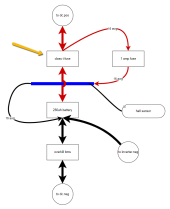I am in the process of putting together a battery backup solution for my home. Listed below are the items which I have purchased so far. I am looking for the best blueprints to properly connect everything together and to learn what I am missing. I have looked at many videos of people building batteries and many solar systems use the all-in-one inverter/charger/controller systems so I haven't really seen a video or article that shows all the items put together which I will be using at this time. I am interested in possibly adding solar panels in the future, but I am not ready for it yet. I want to be able to charge my batteries from the grid under normal circumstances and from one of my generators in an extended power outage situation. I want redundancy in my solution so that is why I am starting with 2 batteries each being 12v. I have seen where it is possible to use multiple chargers and multiple inverters. To start with, I will only have one inverter and one charger, but I want to have at least 2 of each in the future. In the future, I may transition to a 24-volt solution, but I will use 12v for learning. It may be all I need, and I can use the two 12V batteries in different locations, if needed, and they would be easier to transport.
Any assistance is greatly appreciated!
- (8) VariCore LiFePO4 cells of 280 AH capacity (will make 2 batteries of 4 cells each)
- Purchased from AliExpress LiitokalaVariCoreFlagship Store earlier this year per the link on Will's site
- (2) Overkill Solar 12v 4S 120A BMS
- I added the Bluetooth option to both.
- (1) AIMS Power CON120AC1224DC AC Converter & Battery 12V or 24V Smart Charger 75 amps Listed to UL 458 & CSA
- (1) Renogy 3000W 12V Pure Sine Wave Inverter RNG-INVT-3000-12V-P2
- (1) 4 Stud Bus Bar Power Distribution Block with Cover (Red & Black)
- (1) Kungber DC Power Supply Variable with Memory, 30V 10A Adjustable Switching Regulated DC Bench Linear Power Supply
- for top-balancing the cells, etc.
- (1) APT, 1 mil Thick Polyimide Adhesive Tape, HighTemperature and Heat Tape
- (1) NTE Electronics 25W030 Cermet Wire Wound Resistor, 5% Tolerance, Axial Lead, 25W, Flameproof, 30 Ohm Resistance
Any assistance is greatly appreciated!




